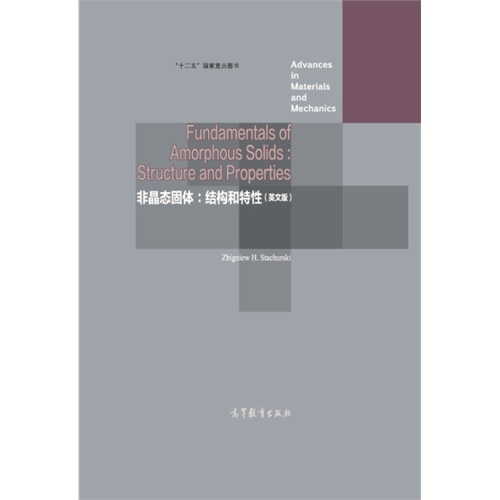- ISBN:9787040426298
- 装帧:一般胶版纸
- 册数:暂无
- 重量:暂无
- 开本:16开
- 页数:287
- 出版时间:2015-05-01
- 条形码:9787040426298 ; 978-7-04-042629-8
本书特色
本书采用独特的方法阐述了非晶态固体的基础理论。将非晶态固体分为无机玻璃、有机玻璃、玻璃金属合金和薄膜四类,构建了非晶态固体的结构模型,定义了理想的非晶体固体的原子排列,澄清了玻璃固体中非晶态原子排列的奥秘。 本书是学习路径积分的一本经典著作,不仅可供物理系师生使用,也是专业人员极好的参考资料。
内容简介
本书采用独特的方法阐述了非晶态固体的基础理论。将非晶态固体分为无机玻璃、有机玻璃、玻璃金属合金和薄膜四类,构建了非晶态固体的结构模型,定义了理想的非晶体固体的原子排列,澄清了玻璃固体中非晶态原子排列的奥秘。
目录
作者简介
Zbigniew H. Stachurski,澳大利亚国立大学教授。1965年本科毕业于波兰 AGH 科技大学( Krakow),1968年博士毕业于英国Bristol大学。1991年当选澳大利亚皇家化学学会会员,1993年获皇家化学学会“聚合物材料突出贡献奖”。2002年任澳大利亚国立大学材料中心主任。为英国、瑞士、希腊、新加坡等多所高校的访问教授。会讲5种语言:English, Polish, Ukrainian, French, Russian.
-

醉眼看建筑
¥6.9¥23.0 -

不穷之景园林情韵
¥8.7¥28.0 -

古今中外桥梁
¥20.4¥68.0 -

冷眼看建筑
¥9.9¥24.0 -

庭院造园艺术——浙江传统民居
¥15.9¥59.0 -

中国古代建筑概说-大家小书
¥15.4¥28.0 -

汉宝德谈现代建筑
¥13.1¥39.8 -

走向新建筑
¥22.3¥42.0 -

禅都物语---京都历史建筑图说
¥13.2¥49.0 -

人气小店设计解解剖书(八品)
¥13.3¥39.0 -

中国舞蹈史话-大家小书
¥8.4¥22.0 -

图解日式茶室设计
¥39.2¥98.0 -

建筑园林文化趣味读本
¥17.9¥56.0 -

译文经典空间的诗学/译文经典/(法)巴什拉
¥25.4¥43.0 -

西泽立卫对谈集
¥14.4¥48.0 -

宋《营造法式》研究史
¥45.5¥99.0 -

新疆伊斯兰陵墓建筑艺术
¥13.3¥29.0 -

走遍华夏-一本书读懂中国古城
¥11.4¥38.0 -

中国城池史
¥23.3¥48.0 -

景观园林设计10原则
¥14.0¥39.0













